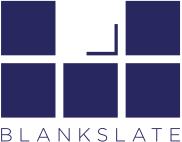The Impacts of Intersectionality on the Workplace – Part One
What is intersectionality? Intersectionality is a term that was coined by theorist Kimberle Crenshaw that describes the intersection of disadvantages that are experienced by a person, who belongs to the two marginalized groups; Gender and race.
Our upcoming two-part series discusses the impacts of intersectionality on hiring discrimination and equal pay. Having well defined recruitment and compensation structures will remedy the realities of the intersection of race and gender discrimination.
The theme for the 2019 International Women’s Day, “Think Equal, Build Smart, Innovate for Change”, describes the ideology of this movement to promote gender equality and the empowerment of women. When it comes to diversity and inclusion with regards to women in the workplace, the movement focuses on women generally and overlooks the impacts that the concept of intersectionality can have on women of colour.
Think Equal, Build Smart, Innovate for Change.
Intersectionality -Think Equal
The dichotomy of men and women’s careers is often used to justify the statistical discrimination of women during the hiring process. This happens whether deliberately or unconsciously. Historically, women were relegated to service and administrative roles. Presently women are more likely to take on part-time work and/or their careers are interrupted more frequently due to caring for children. These beliefs about the differences in abilities and skills between men and women often result in women being overlooked for opportunities and/or promotions.
For women of colour, the discrimination is exacerbated by the intersection of race and gender biases resulting in women of colour being more vulnerable to discriminatory employment practices. A study conducted by PNAS showed that despite many companies commitment to a diverse workforce over recent years, racial employment discrimination in the US hasn’t improved in 25 years. Their results revealed that on average, white applicants receive 36% more callbacks than equally qualified African Americans and 24% more callbacks than Latinos. Much like gender employment discrimination, racial employment discrimination is due to the legacy effects of historical discrimination that has shaped today’s systems and processes. This results in both deliberate discrimination and unconscious bias.
So how do you avoid discrimination and biases in your hiring process?
Think equal. Be aware that discrimination exists. Give your hiring team the tools to provide a fair and equal candidate experience for all.
Job Description
- Rework your job descriptions to be more gender neutral. Stereotypical male gendered words can deter female applicants from submitting their resume. Applicants may feel they won’t be a good fit based on adjectives such as assertive, determined, independent, competitive.
- Having a clear list of requirements and qualifications in job descriptions will help focus your hiring team. This allows them to screen for KSA’s and not demographic characteristics.
Before the Interview
- Plan to involve multiple interviewers from diverse backgrounds and coordinate the interview process
- Be aware of interview biases such as the like me effect, primacy & recency effect, and halo & horns effect.
During the Interview
- Use prepared skills based behavioral interview questions to determine future employment behavior using real life examples of past employment behavior. Using values based behavioral questions will help give you an idea of fit for your company. It will also help define abilities based on the behaviors your company fosters and not based on biases.
- Generate actionable data to support your gut feeling using the Quantifiable Recruitment process.
These steps will minimize room for discrimination and ensure a fair interview process
Stay tuned for part two of the impact of intersectionality on the workplace where we discuss equal pay.
